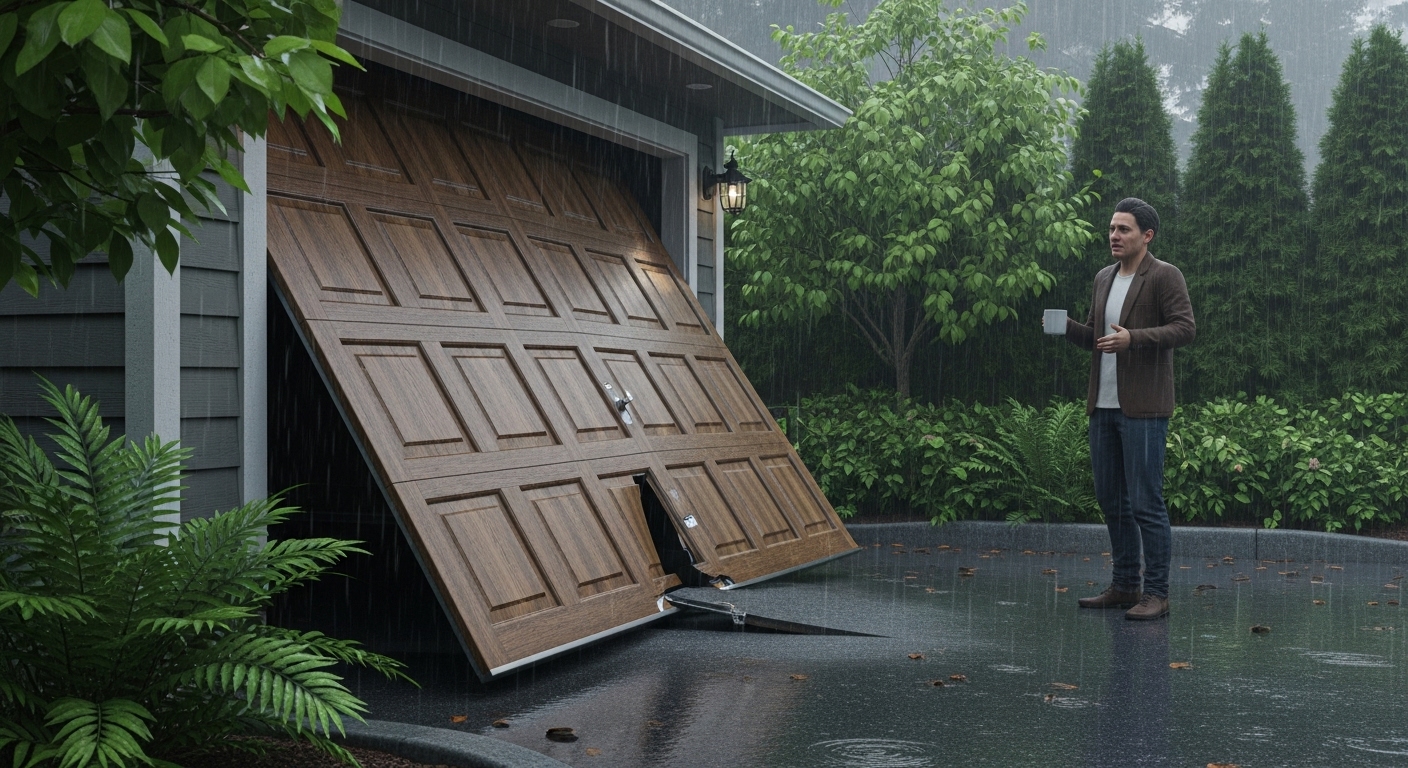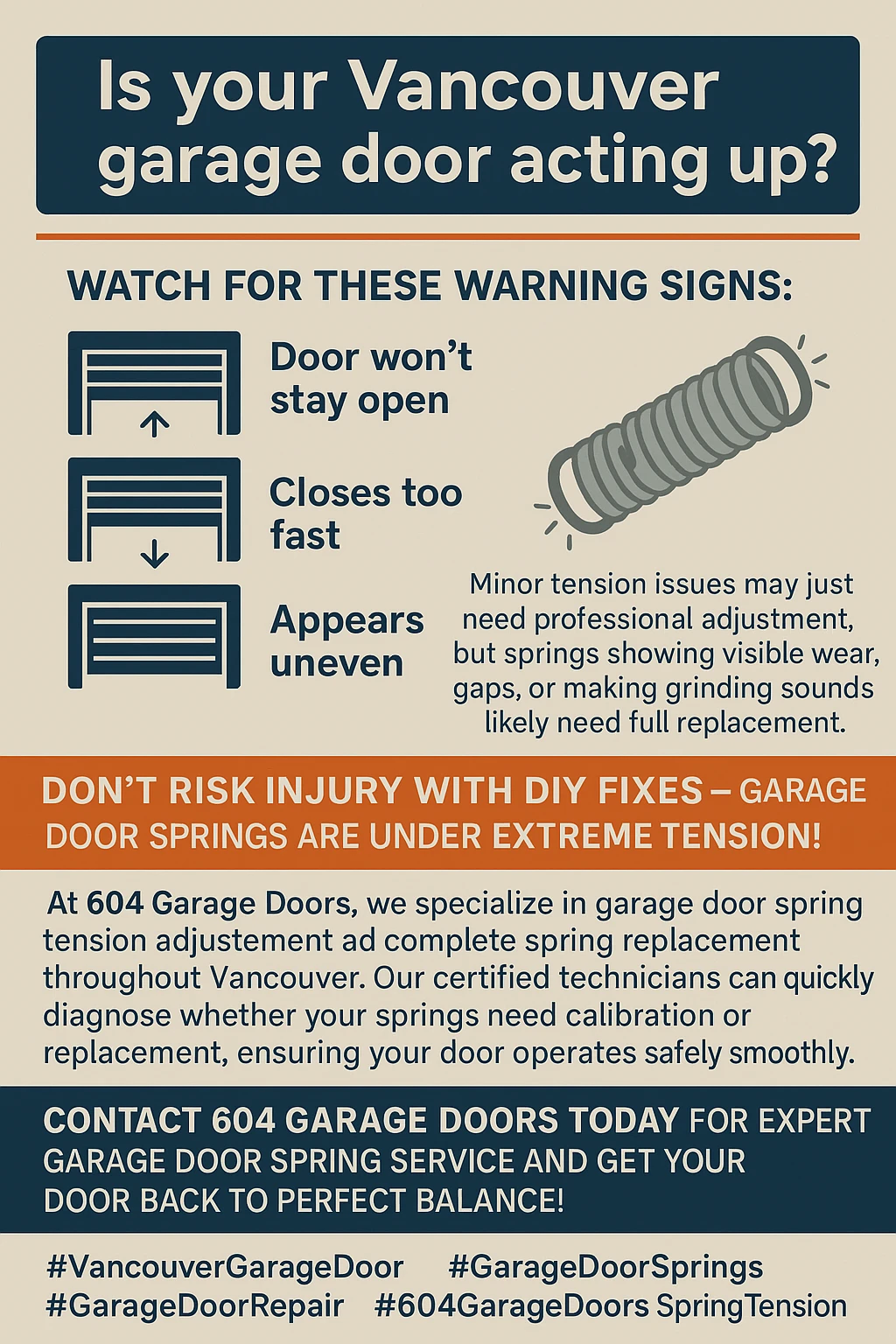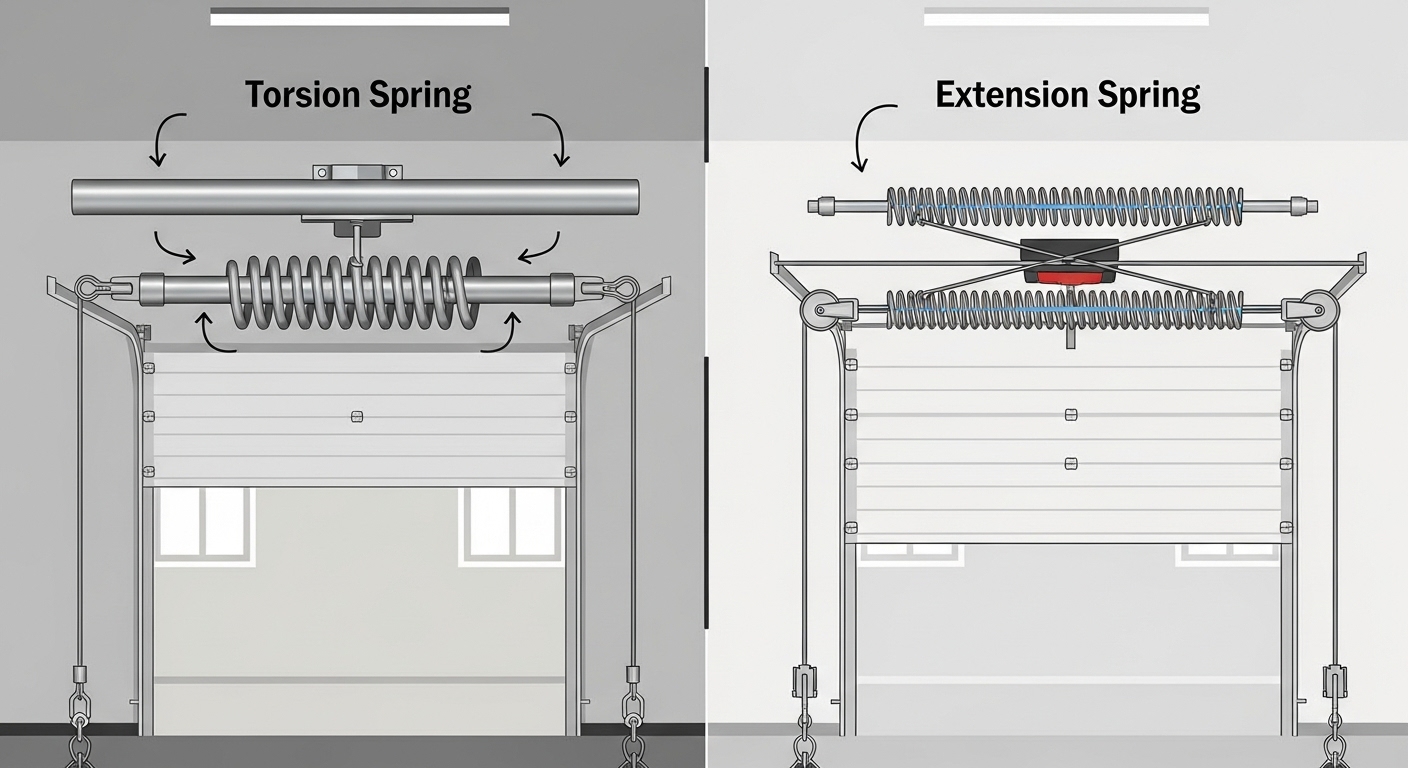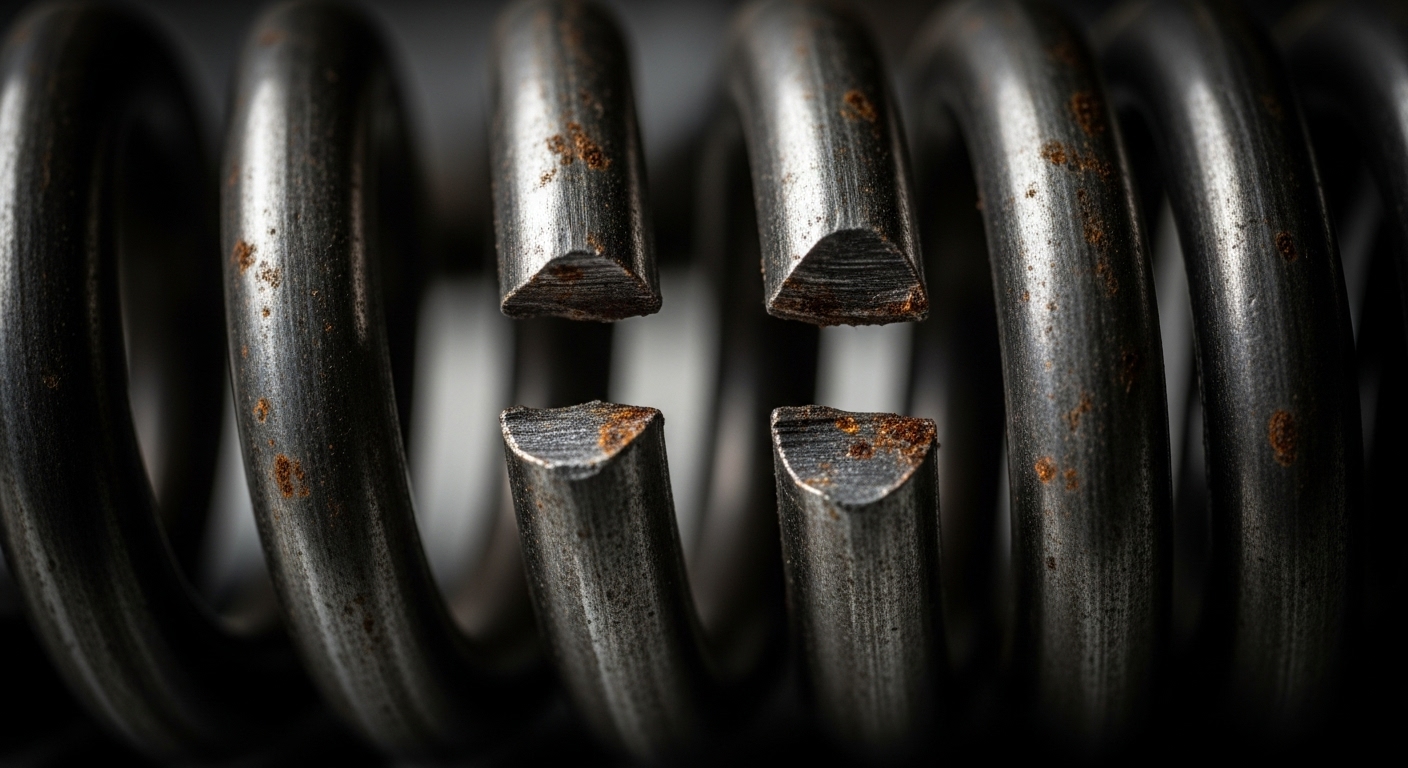Garage Door Spring Tension Problems: How to Tell if Your Vancouver Garage Door Springs Need Adjustment vs Full Replacement
Dealing with garage door spring tension issues and wondering if you need an adjustment or full replacement? We’ll break down the key warning signs, cost considerations, and safety factors that Vancouver homeowners need to know when making this critical decision.Picture this: it’s 7 AM on a typical rainy Vancouver morning, you’re already running late for work, and your garage door suddenly refuses to budge more than a few inches off the ground. Sound familiar? If you’re nodding your head, you’re likely dealing with garage door spring tension problems – one of the most common yet potentially dangerous issues that Vancouver homeowners face. The big question isn’t just “what’s wrong?” but rather “do I need a simple adjustment or a complete spring replacement?” This decision can mean the difference between a $150 service call and a $500+ replacement project.  Understanding the difference between adjustment and replacement needs becomes even more crucial in Vancouver’s unique climate. Our city’s notorious moisture levels and temperature fluctuations put extra stress on garage door springs, often accelerating wear patterns that might take longer to develop in drier climates. With most garage door springs rated for about 10,000 cycles – roughly 7 to 9 years of typical use – Vancouver homeowners often find themselves dealing with spring issues sooner than expected due to our coastal weather conditions.The stakes are higher than just inconvenience and cost. Garage door springs store an enormous amount of tension energy, enough to counterbalance doors weighing 150 to 400 pounds. When these springs fail or are improperly adjusted, they pose serious safety risks that can result in property damage or severe injury. That’s why knowing when to call for professional help versus attempting any DIY solutions becomes absolutely critical for Vancouver homeowners.
Understanding the difference between adjustment and replacement needs becomes even more crucial in Vancouver’s unique climate. Our city’s notorious moisture levels and temperature fluctuations put extra stress on garage door springs, often accelerating wear patterns that might take longer to develop in drier climates. With most garage door springs rated for about 10,000 cycles – roughly 7 to 9 years of typical use – Vancouver homeowners often find themselves dealing with spring issues sooner than expected due to our coastal weather conditions.The stakes are higher than just inconvenience and cost. Garage door springs store an enormous amount of tension energy, enough to counterbalance doors weighing 150 to 400 pounds. When these springs fail or are improperly adjusted, they pose serious safety risks that can result in property damage or severe injury. That’s why knowing when to call for professional help versus attempting any DIY solutions becomes absolutely critical for Vancouver homeowners.
Key Outtakes:
- Garage door springs typically last 10,000 cycles or 7-9 years with average use, but Vancouver’s moisture can accelerate wear without proper maintenance
- Professional spring repair in Vancouver costs $150-200, while full replacement ranges $275-700 depending on door type and spring configuration
- Torsion springs last 25% longer than extension springs and offer superior safety features, making them the preferred choice for most installations
- DIY spring repairs can be fatal due to extreme tension forces – professional service is essential for safety and warranty protection
- Regular maintenance every 6 months can extend spring life by 25% and help identify adjustment needs before complete failure occurs

Understanding Garage Door Spring Systems in Vancouver’s Climate
Before diving into whether your springs need adjustment or replacement, it’s essential to understand what type of spring system you’re working with and how Vancouver’s unique environment affects these critical components. This knowledge will help you communicate more effectively with service professionals and make informed decisions about your garage door maintenance.Most residential garage doors in Vancouver use one of three spring systems: torsion springs, extension springs, or Wayne Dalton Torque Master systems. Torsion springs, mounted horizontally above your closed garage door, are by far the most common and reliable option. These springs work by winding and unwinding to store and release energy as your door opens and closes. Extension springs, found on either side of your garage door tracks, stretch and contract to provide the necessary lifting force. The Wayne Dalton Torque Master system encases springs within a tube, offering a cleaner appearance but requiring specialized service when problems arise.  The way these springs function is actually quite remarkable when you think about it. Your garage door likely weighs between 150 and 400 pounds – that’s like having a small car suspended above your head every time you park. The springs do the heavy lifting, literally, by storing potential energy when the door closes and releasing that energy to assist with opening. When properly calibrated, you should be able to lift your garage door manually with just 15-20 pounds of force, even if the door itself weighs 200+ pounds.Vancouver’s coastal climate presents unique challenges for garage door springs that homeowners in drier regions don’t typically face. Our average annual humidity of 76% accelerates metal corrosion, particularly during our notorious wet season from October through March. This moisture exposure causes springs to develop rust and corrosion more quickly than in arid climates, potentially reducing their effective lifespan by 15-20%. Additionally, our mild but variable temperatures – ranging from around 2°C in winter to 22°C in summer – cause constant expansion and contraction of the metal coils.Temperature fluctuations are particularly problematic because they affect spring calibration. A spring system that’s perfectly balanced in summer might become too loose during cooler months, causing your garage door opener to work harder and potentially triggering safety reversals. This is why many Vancouver homeowners notice their garage doors acting “moody” during seasonal transitions. The combination of moisture and temperature changes means that springs in our region often require professional attention more frequently than manufacturers’ general recommendations suggest.Understanding your specific spring system becomes crucial when problems arise. Torsion springs offer superior longevity and safety features, typically lasting 25% longer than extension springs while providing more controlled door movement. However, they also operate under higher tension levels, making professional service absolutely essential when adjustments or replacements are needed.
The way these springs function is actually quite remarkable when you think about it. Your garage door likely weighs between 150 and 400 pounds – that’s like having a small car suspended above your head every time you park. The springs do the heavy lifting, literally, by storing potential energy when the door closes and releasing that energy to assist with opening. When properly calibrated, you should be able to lift your garage door manually with just 15-20 pounds of force, even if the door itself weighs 200+ pounds.Vancouver’s coastal climate presents unique challenges for garage door springs that homeowners in drier regions don’t typically face. Our average annual humidity of 76% accelerates metal corrosion, particularly during our notorious wet season from October through March. This moisture exposure causes springs to develop rust and corrosion more quickly than in arid climates, potentially reducing their effective lifespan by 15-20%. Additionally, our mild but variable temperatures – ranging from around 2°C in winter to 22°C in summer – cause constant expansion and contraction of the metal coils.Temperature fluctuations are particularly problematic because they affect spring calibration. A spring system that’s perfectly balanced in summer might become too loose during cooler months, causing your garage door opener to work harder and potentially triggering safety reversals. This is why many Vancouver homeowners notice their garage doors acting “moody” during seasonal transitions. The combination of moisture and temperature changes means that springs in our region often require professional attention more frequently than manufacturers’ general recommendations suggest.Understanding your specific spring system becomes crucial when problems arise. Torsion springs offer superior longevity and safety features, typically lasting 25% longer than extension springs while providing more controlled door movement. However, they also operate under higher tension levels, making professional service absolutely essential when adjustments or replacements are needed.
Warning Signs Your Garage Door Springs Need Professional Attention
Now that we’ve established the foundation of how spring systems work in Vancouver’s environment, let’s focus on identifying the warning signs that indicate your springs need professional evaluation. Recognizing these symptoms early can save you money and prevent dangerous situations from developing.The most obvious sign of spring problems is when your garage door refuses to open or only opens a few inches before stopping. This typically indicates that one or both springs have snapped completely, leaving your garage door opener to attempt lifting the full weight of the door – a task it simply wasn’t designed to handle. If you press your garage door remote and hear the opener motor running but see minimal door movement, stop immediately and disconnect the opener. Continuing to operate the system can damage both the opener and the door itself.Visual inspection of your springs can reveal several red flags that indicate impending failure or the need for adjustment. Look for visible gaps in the spring coils – this is a clear sign that the spring has snapped and needs immediate replacement. Stretched or elongated springs that appear longer than their companion spring (if you have two) suggest that one spring is carrying more load than the other, indicating an imbalance that requires professional correction. Rust formation, particularly heavy corrosion that creates flaky orange deposits, weakens the metal and signals that replacement should be considered even if the spring is still functional.  Audio cues often provide the first warning of spring problems. A loud bang or popping sound, especially during door operation, frequently indicates a spring has just snapped. This sound can be startling – homeowners often describe it as similar to a gunshot or car backfiring. Less dramatic but equally important are grinding, squeaking, or creaking sounds during door operation, which suggest that springs are struggling under tension and may benefit from lubrication or adjustment before more serious problems develop.The door balance test is one of the most reliable ways to assess whether your springs need attention. With your garage door opener disconnected, manually lift your door to about the halfway point and let go. A properly balanced door should stay put or move very slowly in either direction. If the door slams shut, your springs have insufficient tension. If it shoots up toward the ceiling, there’s too much tension. Either scenario indicates the need for professional adjustment or potentially spring replacement if the springs can no longer hold proper calibration.Operational symptoms extend beyond the obvious failure scenarios. If your garage door closes much faster than normal, it suggests the springs aren’t providing adequate support to control the descent. This creates safety hazards, particularly for vehicles, pets, or people who might be in the door’s path. Conversely, if the door feels extremely heavy when you attempt to lift it manually (remember, it should require only 15-20 pounds of force when properly balanced), the springs aren’t providing sufficient assistance.Keep an eye on your door’s alignment during operation – if one side appears higher than the other or if the door appears crooked when opening or closing, this suggests uneven spring tension that requires professional attention. These imbalances can cause premature wear on tracks, rollers, and other components, turning a simple spring adjustment into a more expensive multi-component repair project.
Audio cues often provide the first warning of spring problems. A loud bang or popping sound, especially during door operation, frequently indicates a spring has just snapped. This sound can be startling – homeowners often describe it as similar to a gunshot or car backfiring. Less dramatic but equally important are grinding, squeaking, or creaking sounds during door operation, which suggest that springs are struggling under tension and may benefit from lubrication or adjustment before more serious problems develop.The door balance test is one of the most reliable ways to assess whether your springs need attention. With your garage door opener disconnected, manually lift your door to about the halfway point and let go. A properly balanced door should stay put or move very slowly in either direction. If the door slams shut, your springs have insufficient tension. If it shoots up toward the ceiling, there’s too much tension. Either scenario indicates the need for professional adjustment or potentially spring replacement if the springs can no longer hold proper calibration.Operational symptoms extend beyond the obvious failure scenarios. If your garage door closes much faster than normal, it suggests the springs aren’t providing adequate support to control the descent. This creates safety hazards, particularly for vehicles, pets, or people who might be in the door’s path. Conversely, if the door feels extremely heavy when you attempt to lift it manually (remember, it should require only 15-20 pounds of force when properly balanced), the springs aren’t providing sufficient assistance.Keep an eye on your door’s alignment during operation – if one side appears higher than the other or if the door appears crooked when opening or closing, this suggests uneven spring tension that requires professional attention. These imbalances can cause premature wear on tracks, rollers, and other components, turning a simple spring adjustment into a more expensive multi-component repair project.
Making the Adjustment vs Replacement Decision
Understanding when springs can be adjusted versus when they require complete replacement is crucial for Vancouver homeowners looking to make cost-effective decisions while maintaining safety standards. This decision impacts not only your immediate repair costs but also the long-term reliability and safety of your garage door system.Spring adjustment typically suffices when you’re dealing with minor tension loss that hasn’t resulted from component failure


